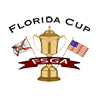Written by: Darin Green, Senior Director of Rules & Competitions
During the third round of the Hero Dubai Desert Classic, Patrick Reed encountered a situation that us Florida golfers are accustomed to encountering – a ball stuck in a palm tree.
On the 17th hole, Reed’s tee shot flew into the top of a tall palm tree. There were three palm trees in the area and Reed believed that his ball flew into the right tree. They see several balls stuck in the tree and Reed used his range finder to inspect the balls from the ground. He spotted a ball in the tree that he was certain was his. There was a rules official there assisting Reed with the search. Reed explained to the official that he could see his unique marking on the ball and that he was certain it was his. The rules official was satisfied, and agreed that Reed successfully identified his ball.
Reed informed the official that he would like to take unplayable ball relief and the official assisted Reed with his relief. Reed had three options under Rule 19.2 Unplayable Ball, all for a one-stroke penalty. His first option was to return to the tee nearly 300 yards away. His second option was to use back-on-the-line relief by keeping the spot of the original ball and the hole and going back as far as he would like, and dropping a ball on that line (not a good option since the tree would be in his way). The last option was to take lateral relief by measuring two club-lengths from the spot on the ground directly underneath his ball and dropping a ball in the relief area no closer to the hole. Reed choose option three because he was able to measure away from tree leaving him a clear shot to the green.
After the tournament, someone carefully examined the video of Reed’s tee shot flying into the palm tree and it appears to fly into a different palm tree than the one Reed claimed to locate his ball with his identifying markings on it. If the ball that Reed claimed was his, was actually not his, then his original ball was not found and is lost under the rules.
If Reed’s ball was actually lost, he should have returned to the tee under stroke and distance and since he did not, he played from a wrong place and would have incurred a two-stroke penalty or a disqualification penalty. Since the distance from tee to where he dropped and played from was nearly 300 yards, the Committee would have been justified in determining that Reed gained a significant advantage by playing from the wrong place and disqualifying him.
The information regarding the potential rules breach came to light after the competition was closed so the results were final.





